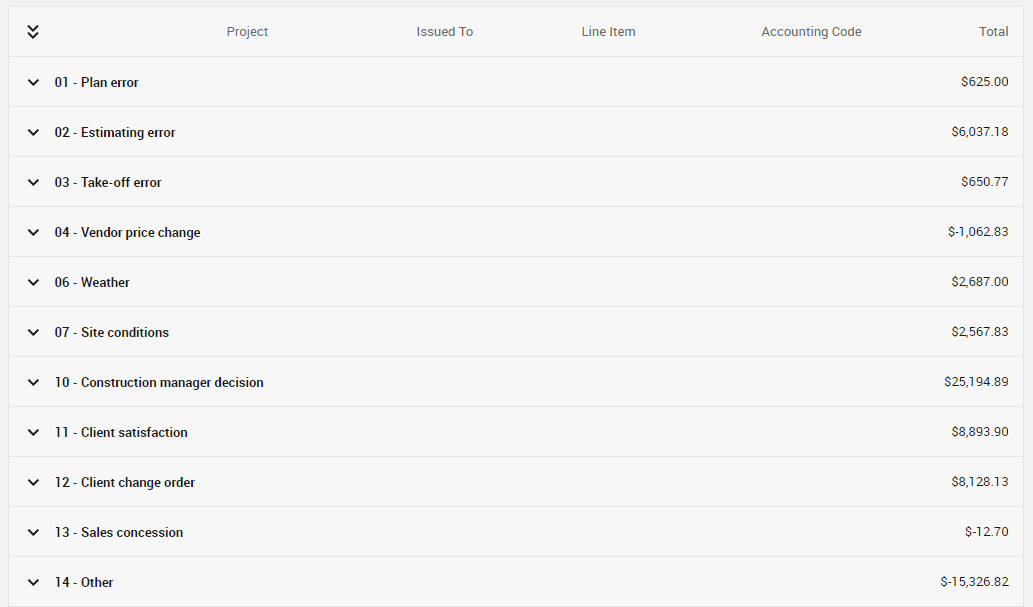You’ve probably heard about them. Maybe you attended one of CoConstruct’s conferences and heard Spencer Padgett wax lyrical about their many benefits. But when you really think about it, you probably wonder -- what even are purchase orders and why should you consider using them.
What is a purchase order?
A purchase order is an agreement between your business and a particular trade partner regarding certain scope and price under specified terms and conditions. Many residential construction builders use these documents to commit trade partners to certain negotiated work and/or materials.
While the document itself is straightforward and most likely represents many elements of a Subcontractor Agreement, purchase orders offer a deeper layer of importance to your business and bottom line.
1. Balance Cash Flow
One of the main focuses in residential construction, the one that most likely keeps you up at night, revolves around cash flow -- that delicate balance between income and expenses. How do you make sure you invoice the client just in time to handle the incoming bills and project expenses? Purchase orders displayed on the project budget paint this picture for you.

Knowing how much you’re committed to pay any vendor or trade partner, alongside understanding the project timeline, highlights when you might expect a bill. Anticipating incoming bills helps plan the cadence of invoices to your clients. Knowing when money could be going out determines when money should come in -- MEANING you stay in the green!
Once you learn the cadence, standardize this flow on any similarly sized Fixed Price projects. Turn your bottom line around!
2. Eliminate Surprises On Incoming Bills
How many times have you opened a bill from a trade partner and been shocked by the price tag? While there’s no way to anticipate everything (surprises do happen -- but more on that later), wouldn’t it be nice to have some idea of what a trade partner might charge you? Use the back and forth negotiation around price and scope, and turn that into a commitment from your trade. Request a signature or some form of acceptance to guarantee you both at least start on the same page (see more on this in Reason #4).
When those bills come in, you now have something to compare it against. If something looks different, you are that much closer to identifying where prices went up or down.
And hopefully those moments of shock start to dissipate!
Now, back to those surprises. Anything from material theft to scope/estimate changes cause originally negotiated prices to fly out the window. Getting a hold of these surprises and incorporating them into your job costing may seem like a pipe dream. Introducing: the Variance Purchase Order. These types of purchase orders provide a great space to document these surprises plus recording WHY a surprise may have happened for reporting down the road.

Perhaps you should pay attention to future estimating or dig into the decisions project managers make to understand where surprises come from. Documenting these variations gives you more to work from moving forward.
If you track the originally agreed on trade partner costs against the actual costs of the project, any variations or differences will stand out clear as day. Not two months down the road when it comes time to pay the bill or at the end of the project when you’re trying to understand how things slid to the red, but rather, the minute the bill arrives! Adopt the process of recording bills on a budget against those original purchase orders WHEN THEY COME IN to take full advantage of this insight!
3. Illuminate Accurate Project Projections
Ever go through an entire project and not know what your bottom line might look like until the final invoice? Or are you looking for a more efficient way to understand your bottom line projections on a project? A budget that accurately reflects originally planned costs plus committed costs (i.e. your purchase orders with trade partners), plus some calculations for your profit, says a lot about where your project might end up when everything is said and done.

The example budget above shows how understanding the layout of original and revised costs of the project against the expected commitments from trades shapes the expected understanding of project projections. At the bottom of the budget, profit calculations against the commitments set up so far provide a window into where profit might end up by the end of the project. This adds value to your understanding of an individual project’s profitability along the way. If you see a project projecting lower than you anticipate, maybe this means charging a little bit more for that next client upgrade to make up the difference or taking a second look at the work left to complete to see where you might save costs.
4. Define and Communicates Trade Partner Expectations
How much time usually passes between negotiating price/scope to when those trade partners set foot on the job site to perform work? Weeks? Months? Even a little bit of time lapse when both of you juggle many other projects and responsibilities means these details get shoved into the far corner of your memory. While you may have explained to the client the basic scope of work in the contract or initial proposal, these same details, plus much more, also need to land in the hands of those performing the work.
How do you accomplish this? Write it down. Keep it somewhere safe and easy to access. Stay away from paper that can rip, fly away, stain, etc, and instead consider electronic alternatives that allow anyone on your team to see project details.
Purchase orders offer a streamlined documentation of these expectations. In the hands of a trade partner, a purchase order explains what exactly you expect on this project, what they are responsible to provide, and how much you both have agreed it will cost.
So, how much detail should you provide? What exactly do your trade partners need from you to definitively communicate what you expect? This will largely depend on your relationship with that particular trade partner plus the complexity of the project. Ask yourself, on a trade by trade basis:
- How did this trade partner perform this work or similar work in the past? Were certain things missing or conducted below expectation?
- What “snake pits” or “gotchas” exist with this project? For this particular work?
Finally, when thinking through the level of detail, think about whether these details are project specific or generic to rules and regulations for working on jobsites you manage. If it’s more generic, consider including these terms in a Master Subcontractor Agreement all trade partners sign and regularly renew. The purchase order is best geared towards project specific details.
5. Create a Paper Trail That Can Save You in Court
In those, hopefully, rare times where a trade partner questions a payment or you question the quality of work, did you ever ask yourself, “now where is that one email or text thread?” Hunting down the paper trail of a price negotiation or a conversation about required rework can be daunting when faced with thousands of emails and texts. Documenting everything on one Purchase Order saves you this time and energy, and possibly money. When your business, reputation, and bottom line are on the line, having quick and easy documentation to reference saves you.
Looking to ensure you have backup in these situations? First, set up a process. Decide right here and now you will create purchase orders for trade partner work on your projects. Define what these documents will contain -- what scope of work, expectations, and terms you’ll spell out. THEN take the additional step of requiring your trade partners to sign it. That signature, whether by pen or electronic, provides the backbone to defending you.
